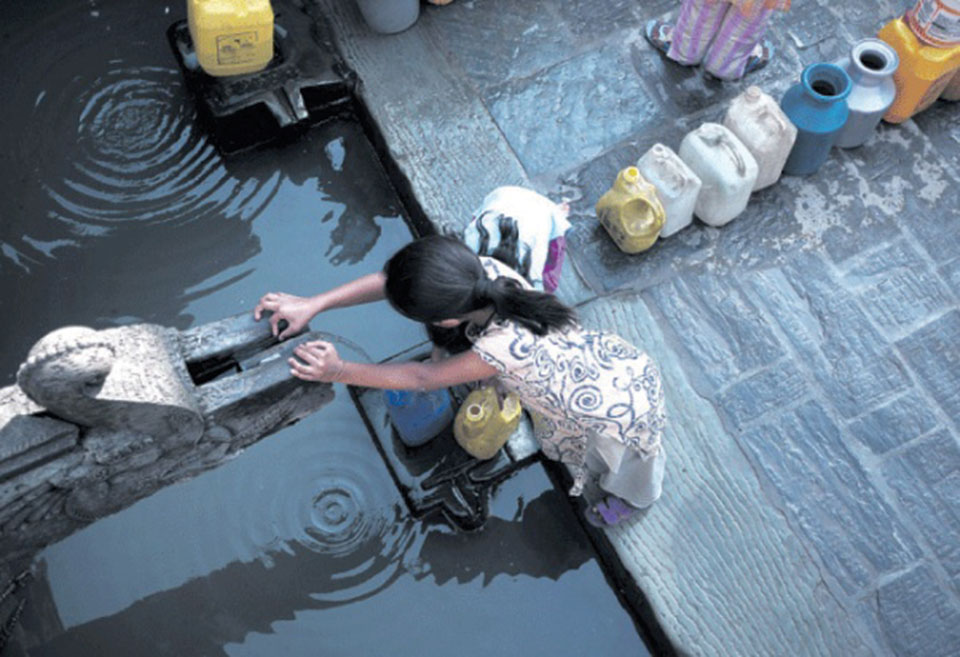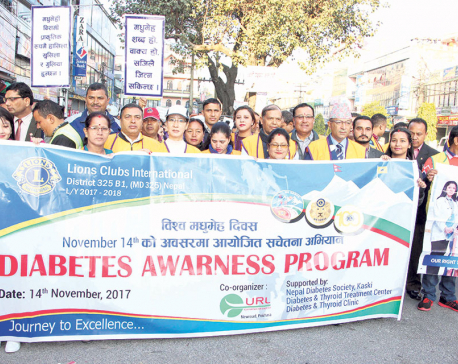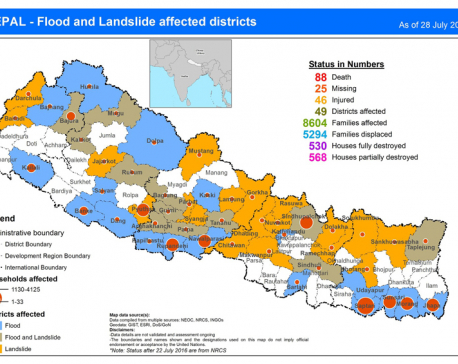
OR

More from Author
Houses in earlier times were made from wood and soil that were susceptible to fire. In case of fire, water reserve in nearby pond came handy
Urban wetlands are land areas flooded with water, seasonally or permanently and they are found in and around cities and their suburbs. They include rivers, flood plains, lakes and swamps. World is seeing rapid increase in urban population since the 1950s. While in 1950, 30 percent of world population was urban, it is projected that by 2050, this percentage will reach 66. More than six billion of world population by then will live in urban areas.
Rate of urbanization is high in African and Asian countries. Nepal is no exception. Rural population is moving to urban centers in search of better education, health facilities and jobs. Apart from Kathmandu Valley, other cities like Biratnagar, Janakpur, Butwal, Chitwan, Pokhara, Dhangadhi and Nepalgunj are experiencing expansion with ever increasing population.
Increase in population in urban centers means increase in demand for housing facilities, daily water needs, sewerage facilities, public transportation and recreation areas among many other things. And this affects open space and wetlands. For instance, large areas in Kathmandu valley before 2000 were used for agriculture purposes. Water from various meandering river was used for irrigation of farmlands. Green spaces were plenty and very few multi-storied buildings were in existence. The situation has drastically changed at the moment.
Kathmandu valley, a historical city, is beautified by natural and artificial water bodies like ponds, dhungedhara (stone spout) and lake. Each and every tole in the valley has some kinds of water body. It has more than 100 ponds, both natural and manmade of varying shapes and sizes.
These historically and traditionally important water sources were constructed for day to day water consumption, irrigation as well as cultural and religious purposes. Another most important use of ponds was to control fire incident in the city. Houses in earlier times were made from wood and soil that were susceptible to fire. So in case of fire, water reserve in nearby pond came handy.
Dhungedhara and ponds have dried up. Sun dhara (Golden spout) and Rani Pokhari are two prominent examples. Increased population, concretization, destruction of water recharge areas have made natural water sources dysfunctional. Reconstruction of Rani Pokhari without due consideration for its archaeological significance and cultural character only shows our lack of understanding of significance of water sources in urban areas.
Kathmandu valley has vein like rivers and rivulets which act, or once acted, as lifeline for people residing in old cities of Kasthamandap (Kathmandu), Patan (Lalitpur) and Bhadgaun (Bhaktapur). Bagmati with origin in Shivapur-Nagarujuna watershed and draining in Chobhar area of valley serves people residing on its bank or farming in floodplain of river.
Only three decades ago, people in Kathmandu valley used water from rivers for household purposes. Rapid urbanization has transformed once living rivers into sewer drains, devoid of aquatic biodiversity. So we face acute scarcity of drinking and water for daily use.
The wetlands are important for sustainable urban harmony. This creates open space in highly dense concrete households. It gives beautiful scenic environment and generates creativity among people. Wetlands like Siddhapokhari, Ranipokhari, Nagdaha, Taudha and many others in the valley carry cultural and religious values. People visit there for worship. They support diverse aquatic and terrestrial flora and fauna thereby supporting in biodiversity conservation. Wetlands help in improving urban air quality.
Urban wetlands also act as heat buffering site. In day time wetlands absorb heat while at night it releases it which helps maintain extreme high or low temperature in surrounding areas. They reduce flooding by absorbing extra amount of water in flood plain. Water collected during monsoon in such wetlands (ponds, lakes and through ground recharge) can be major source of water for the dry season.
Developed countries like Italy, Netherlands, Germany, France and Singapore have well managed water bodies in their urban areas. Rivers, canals, and fountains have added to the beauty of their cities. We can restore our water bodies to earlier glory. Instead of planning to construct café house in premises of Rani Pokhari to serve visitors we need to have restoration plan that will turn it into the heritage that we and coming generation can be proud of.
Developed countries have learnt their lesson by reverting to natural ways. We do not seem to have learned anything.
The author is a Master’s graduate in Environmental Science
You May Like This

Save your health to save your wealth
Diabetes is a metabolic disorder which affects other organs of the patients resulting in terminal diseases like heart attack, failure... Read More...

Save the hills to save Nepal
Nepal’s hills and mountains which once captured the imagination of the West as the land of Sangri La stand on... Read More...

Family appeals for help to save 13-year-old kidney patient
KATHMANDU, Jan 11: Three months ago, Jiwan Prasad Bhandari of Chatrakot Rural Municipality-1, Hunga of Gulmi district discovered that both... Read More...










Just In
- Heavy rainfall likely in Bagmati and Sudurpaschim provinces
- Bangladesh protest leaders taken from hospital by police
- Challenges Confronting the New Coalition
- NRB introduces cautiously flexible measures to address ongoing slowdown in various economic sectors
- Forced Covid-19 cremations: is it too late for redemption?
- NRB to provide collateral-free loans to foreign employment seekers
- NEB to publish Grade 12 results next week
- Body handover begins; Relatives remain dissatisfied with insurance, compensation amount








Leave A Comment